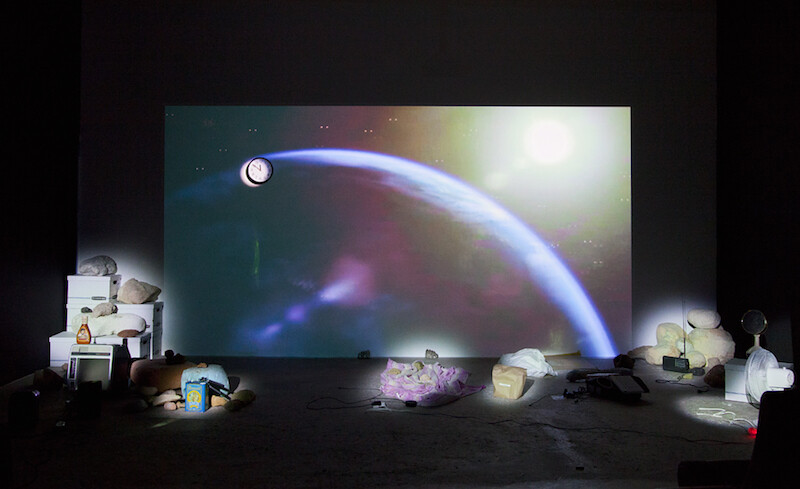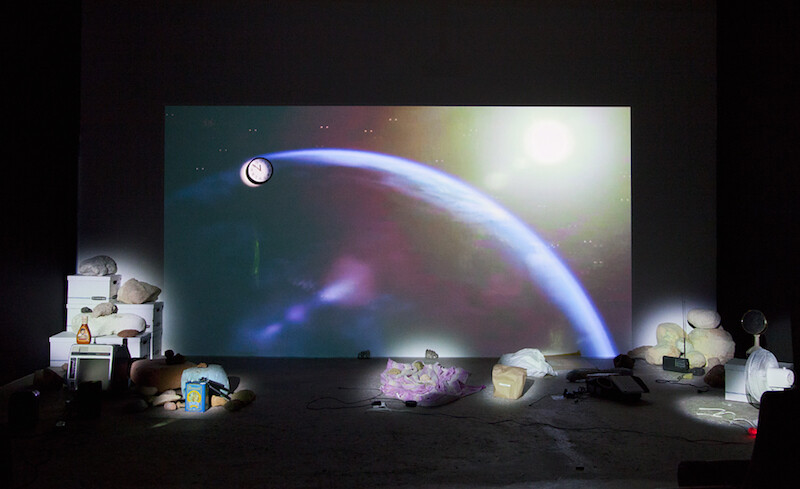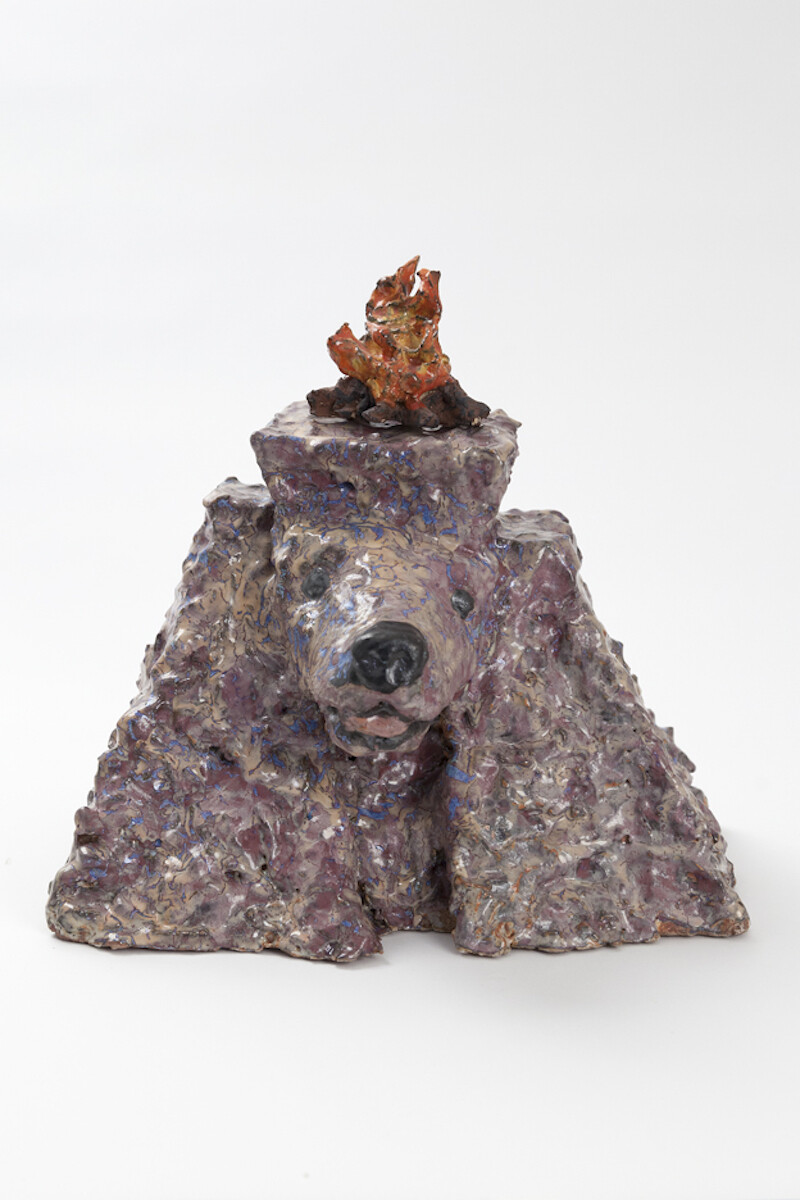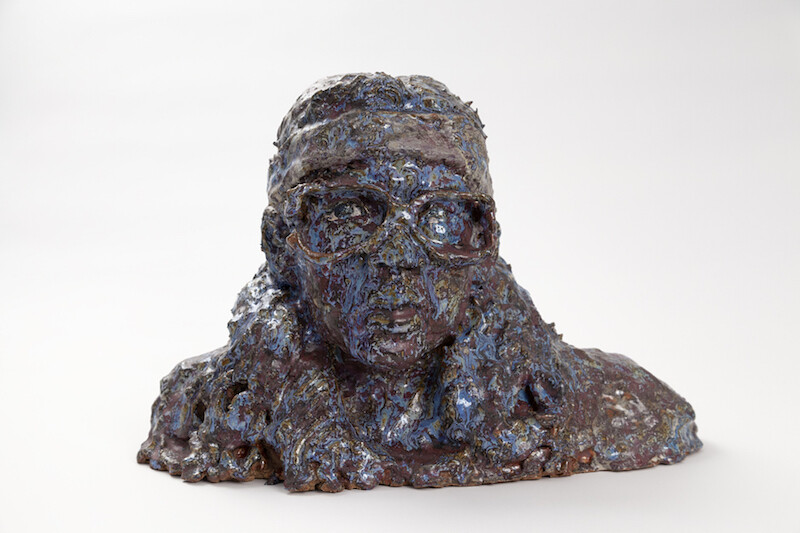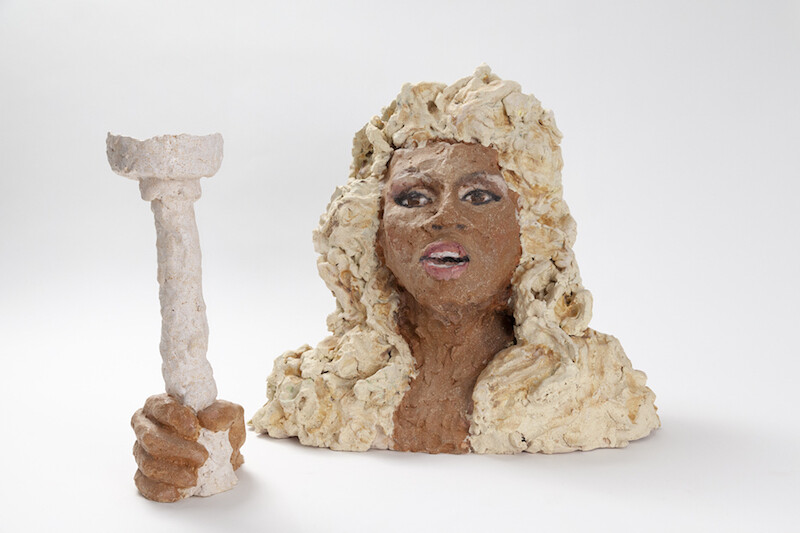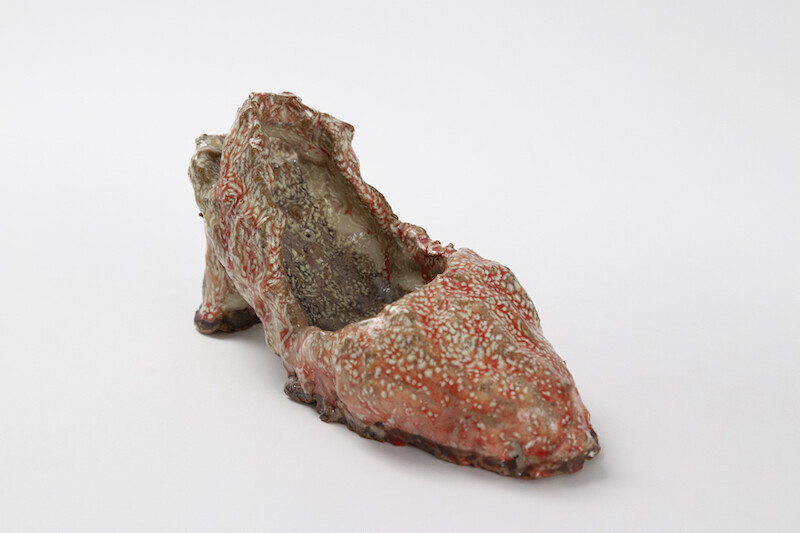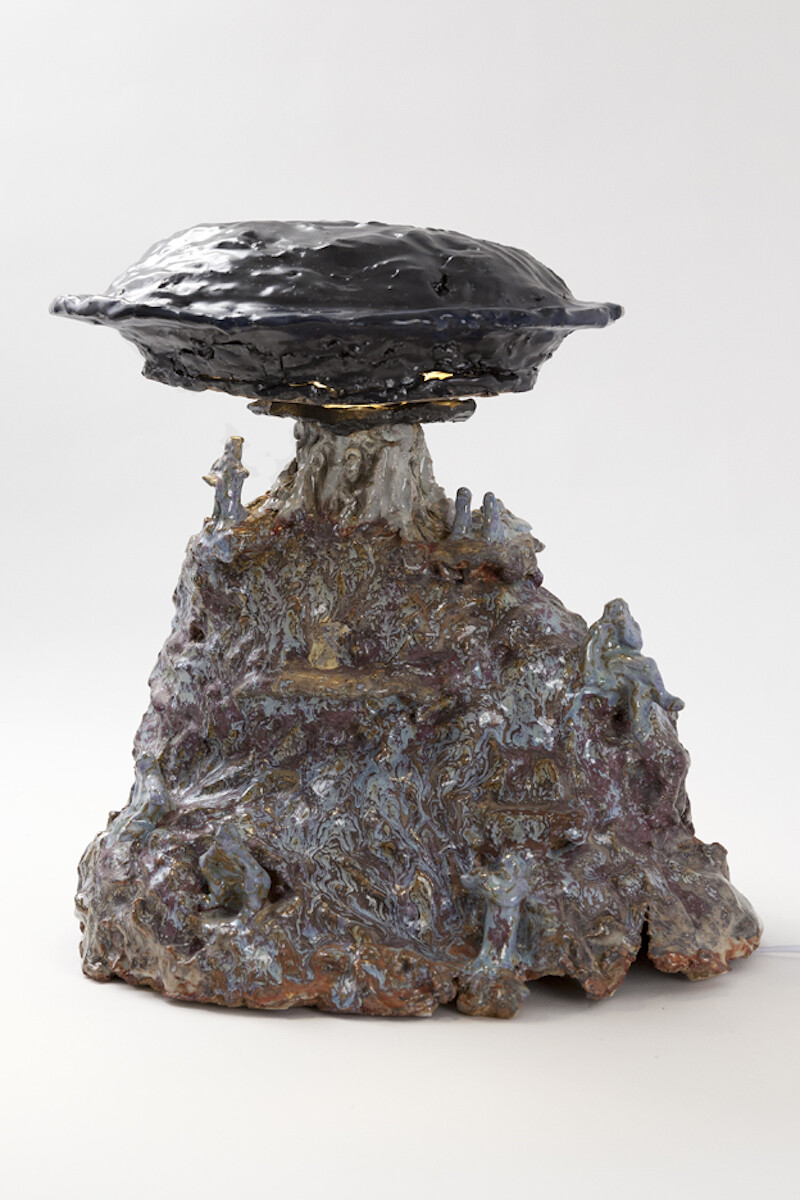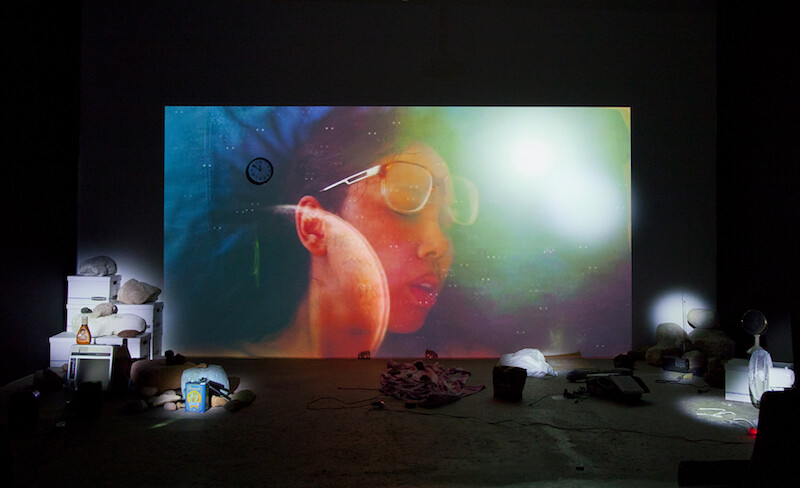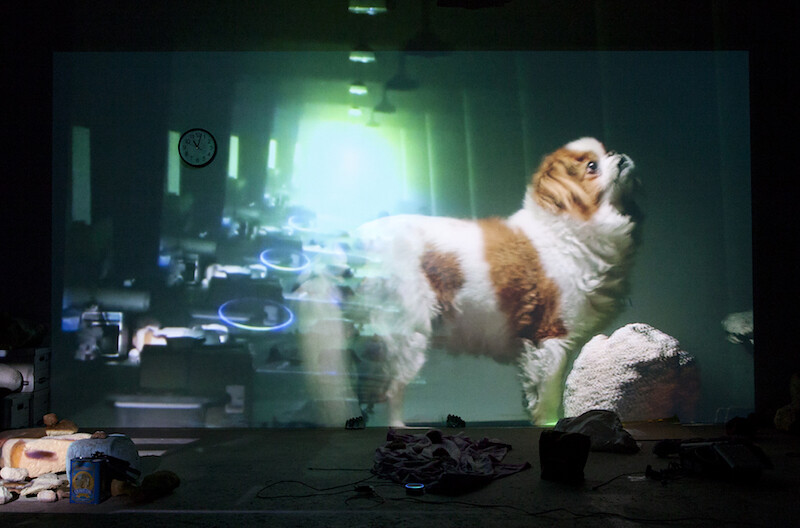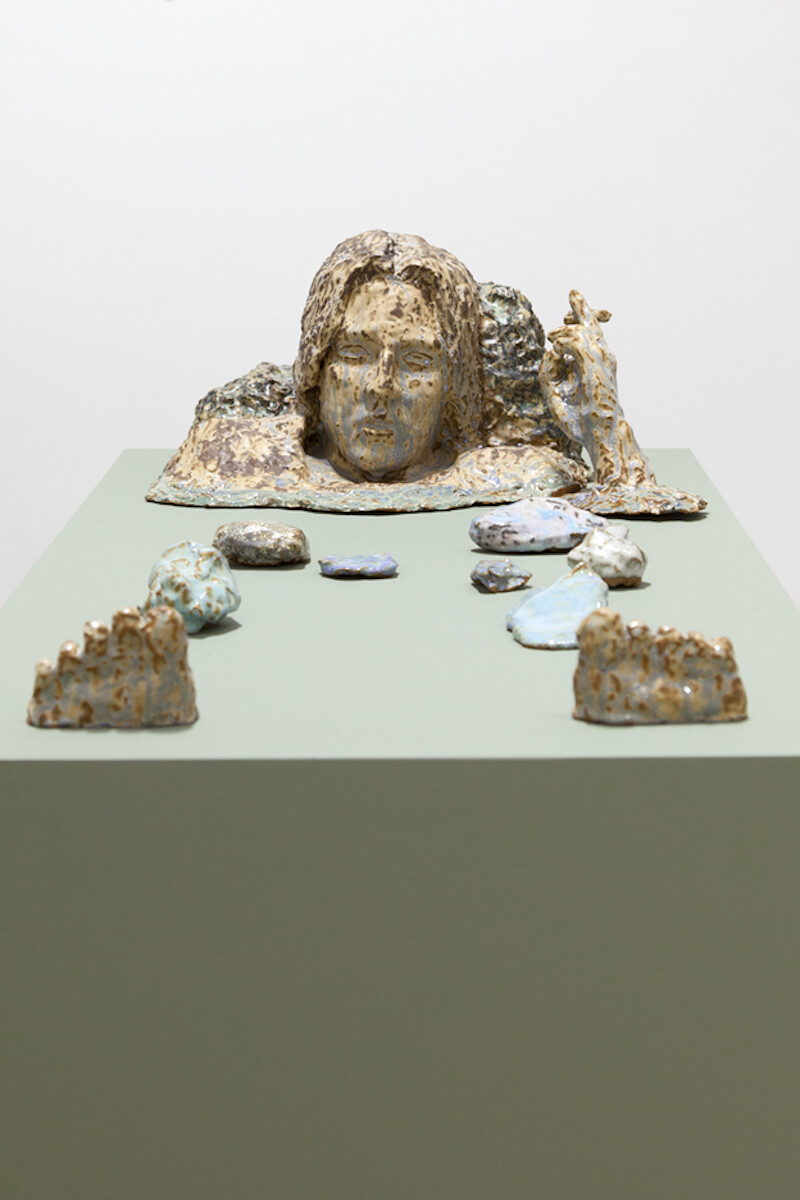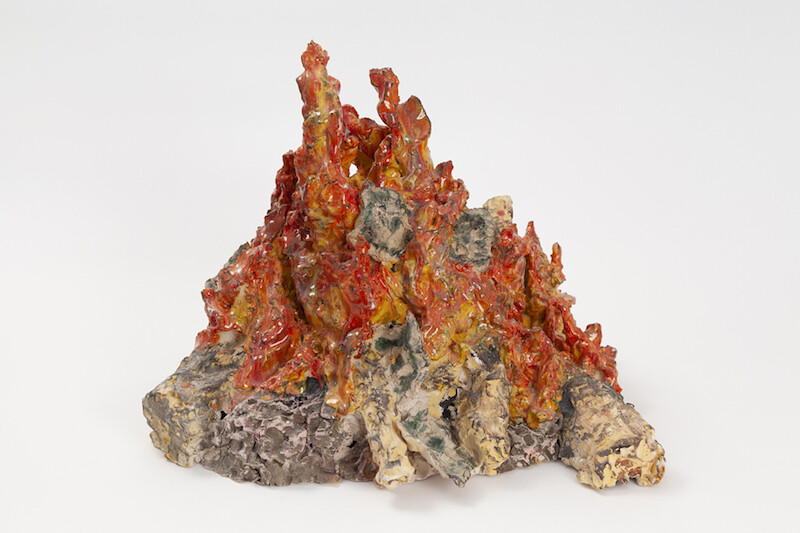Trisha Baga’s third exhibition at Greene Naftali is also her most ambitious. “Mollusca & The Pelvic Floor,” like its cosmically hilarious and dizzyingly psychedelic predecessors, features a dazzling and untidy collection of found, handmade, and moving-image works: from doctored lenticular posters of human anatomy to idiosyncratic ceramic representations of everyday objects, all arranged around and within a deliriously complex 3D video installation.
Baga has made more than 40 ceramic pieces of various sizes and dimensions representing an array of often comical real-world objects. There’s a full rock-band set-up, complete with drum set, guitar, and tip jar; a log fire; a cardboard box with the Amazon swoosh logo; a portrait of Baga’s dog, Monkey, swimming; and a quintet of poodle heads in the shape of Mesoamerican pyramids (temples of the dogs?), with titles such as Kimberly and Butchie (both 2018). Encountering life-sized versions of a crumpled rhinestone Elvis suit or a cockatoo in the gallery, you get the feeling of entering the artist’s psyche—or, simply, of her ideas made flesh, birthed into the world in a way that’s as simultaneously magical and quotidian.
Baga’s ceramics have an amusingly DIY quality that both belies their complex material origins and butts up against the more high-tech elements of the show. Baga frames these contradictions as a set of encounters with the budget artificial intelligence of the virtual assistant. A pair of elaborate, life-sized busts—one depicting RuPaul, the other the artist herself—are both subtitled Calcified Encasing for Virtual Assistant (2018), and indeed you’ll find the devices embedded in the pottery. And the “Mollusca” of the show’s title, a homophone of Amazon’s Alexa, pops up throughout the exhibition as a recurring character, most notably in the video installation, which shares the show’s title.
Behind a black vinyl curtain, the installation utilizes a bewildering combination of physical and projected materials. The 37-minute video comprises two simultaneous projections—one 2D, the other 3D—whose dense mass of imagery Baga has assembled from hilariously disjointed footage of her travels to caves in Sicily, a vacation with her family in the Philippines, rips of Hollywood sci-fi movies (including Contact and the recent Jumanji reboot), experiments in the artist’s studio, cosmic swirls, and the flat digital space of a computer’s desktop. The simultaneous projections and their combination of monoscopic and stereoscopic images play with your sense of reality, an effect compounded by the presence of both found and handmade objects placed around the room that are activated by the imagery. The projector beam occasionally irises a clock on the wall of the gallery, and spotlights other knick-knacks and tchotchkes (salad dressing bottles, rocks, fans, bankers boxes), subsuming them into the video’s bizarre, meandering space-time. Seated in one of several X Rocker–brand gaming chairs in the center of the room, you see shadows of what might be people walking behind you. Depending on how busy the gallery is, these might be real; more likely, they are projections of Baga’s own silhouette. (A couple of times, I couldn’t really tell.)
As your attention oscillates between the elements within the projection and around it, you get the distinct sense that they’re trying to speak to one another—that Baga is attempting to create a space of contact between virtual and material realms, inner and outer space. One touchstone for the exhibition is Frida Kahlo’s perspective-warping 1938 painting What the Water Gave Me, which depicts autobiographical elements floating in the tub near the painter’s partially submerged feet. Baga recreates the painting both within the video—with her own feet filmed in the bathtub as adobo and soy and hot sauce are added to the mix—and within the gallery space via a pair of human-sized ceramic feet at the base of the projection.
All of these feelings of losing distinctions between spaces and states of being—your point-of-view and Baga’s, Baga’s voice and Mollusca’s, the prerecorded and the present, waking and sleep—would be disturbing if the work weren’t at once so goofy and so assured in its execution. As a result, the delirium of the exhibition comes off as an overwhelming but oddly offhand, good-natured ritual of self-care, of extra- and interterrestrial communication, of “meet[ing] ourselves from some future time,” to quote the video’s voiceover. Rejecting the brand-name, bleeding-edge chilliness of the Internet of Things, Baga’s dreamy, DIY approach—enhanced by the chunky materiality of her ceramics—makes this singularity not just palatable, but intimate, reassuring, and wonderfully, messily human.
